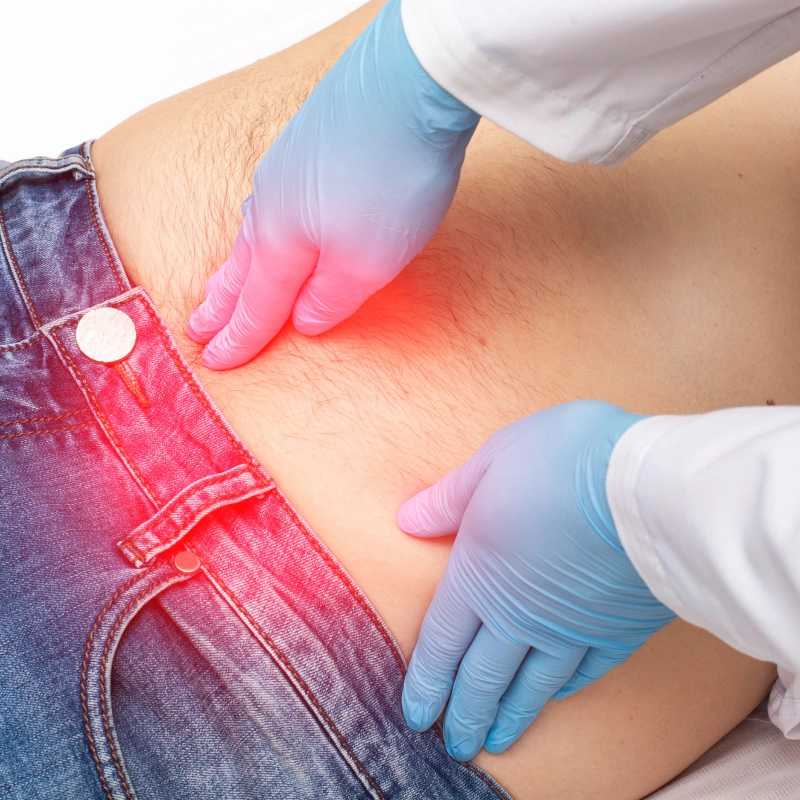
Affecting over 15-20% of the Indian population, hernias are common, often painful, and occasionally life-threatening health conditions that require surgical intervention. Hernias come in various forms, with common types including inguinal, femoral, umbilical, incisional, and hiatal hernias. While surgical repair is the standard treatment for these conditions, it can be associated with potential complications such as postoperative pain, risk of surgical site infections, recurrence and longer recovery times. However, the introduction of new-age technologies like robotic-assisted surgery (RAS) has revolutionized the landscape of hernia treatment, and now doctors can address these issues more effectively with minimal complications, more precision, better repairs, and lesser pain.
Hernia repair in patients with adverse health conditions
These days, many doctors consider robotic-assisted surgery (RAS) to be a more effective approach for various hernias, particularly for individuals who have a weak abdominal wall and also in patients with comorbidities or underlying health conditions such as diabetes, are on anticoagulation (blood thinning medications), obesity or those who are cancer survivors( provided patient is fit to undergo general anesthesia). Patients with adverse health conditions often are at a higher risk of having secondary infections, bleeding and further complications when they undergo additional surgeries. However, using minimally invasive methods like robotic-assisted surgery has translated directly to a higher degree of patient care. The benefits of RAS are manifold, with its minimally invasive nature allowing for smaller incisions, less blood loss, reduced postoperative pain, better and safer adhesiolysis and diminished scarring. Moreover, RAS offers the potential for shorter hospital stays, enabling patients to return to their regular routines more swiftly. When compared to conventional methods, robotic-assisted surgery by using new-age technologies like the Da Vinci stands out for its precision, by providing surgeons with high-magnified vision, 3D visualization, and enhanced dexterity, all of which contribute to safer and more controlled procedures. These factors enable surgeons to navigate with unprecedented accuracy, making it particularly advantageous in addressing complex hernia cases.
Recently, a 62-year-old female patient came to us with two hernias, one resulting from cancer surgery on the left side, and the other stemming from a previous C-section, resulting in an umbilical hernia. The patient reported excruciating pain and swelling, prompting medical intervention. We could effectively address this complex condition with the help of robotic technology, with minimal post-operative complications. This highlights the versatility and effectiveness of robotic-assisted surgery in managing complex hernia cases.
The impact of hernia surgery on posture
In womn, one of the most common hernias are post-partum hernias, which include umbilical hernias. This is because of the stretching of the abdominal wall and thinning of the muscles and what is called the divarication of recti (increase in inter-recti distance –recti being the six-pack muscles in the front of the abdominal wall). This can be both painful and uncomfortable and can have various repercussions on posture, back pain and overall ability to do a lot of activities which require core muscle strength. While treating these kinds of conditions, it is important to focus on the reconstruction of the abdominal wall as well.
One of the most important muscle groups in the body, abdominal muscles are responsible for safeguarding and encompassing the abdominal organs and their functioning. The maintenance of these muscle groups also has an impact on our posture and general health. With advanced RAS technologies like the Da Vinci, we can separate all the layers of the abdominal wall and slide them back into their natural positions( Abdominal wall reconstruction), with enhanced precision. The re-establishment of the integrity of the abdominal core cylinder is of utmost importance to help a person recover back to his/her full mobility and for robustness of the hernia repair.
Reduced post-operative pain
The biggest concern in patients undergoing even a simple hernia repair is post-operative pain management. Irrespective of the type of repair, a hernial defect closure comprising of stitches in the muscle is the main stay of the treatment – which causes post op muscle soreness and pain, especially on attempting to mobilize or even cough/ sneeze. This immediate post op pain can be very debilitating for the patients, restricting activities and deterring early return to work. With the Robotic platform, there is a huge advantage of significantly lower post op pain scores due to higher precision of the surgical procedure and better haemostasis (control of bleeding).
In conclusion, Robotic surgical systems prove particularly advantageous for addressing different types of hernias, by offering enhanced access to the surgical area, thorough adhesion removal, and simplified placement of larger mesh implants and much more robust hernia repair and abdominal wall reconstruction. The benefits of robotic surgery not only enhance the overall experience but, also expedite the recovery process, allowing patients to return to their normal lives more swiftly.

